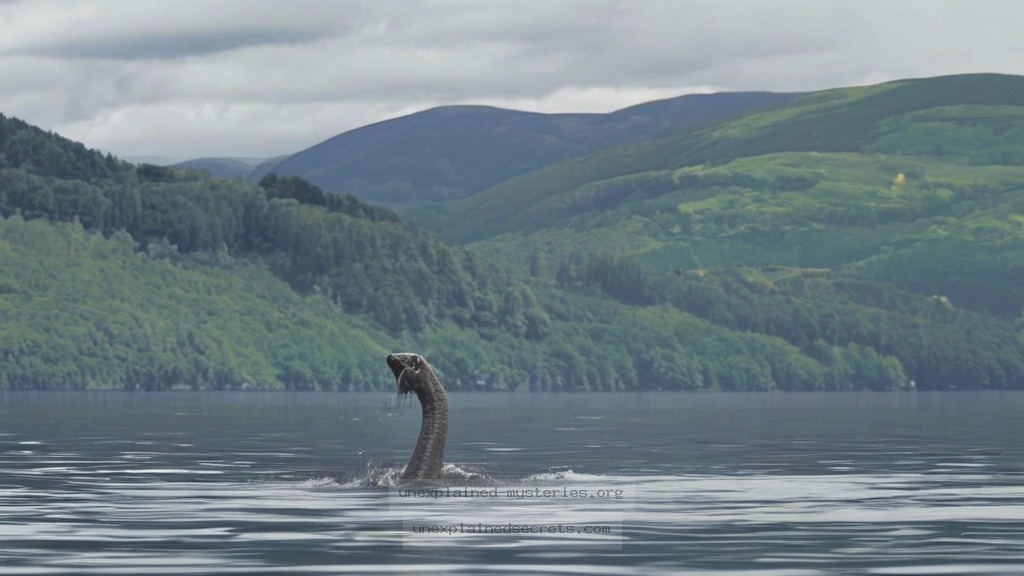What Are the Most Compelling Sonar Detections of the Loch Ness Monster?
What Are the Most Compelling Sonar Detections of the Loch Ness Monster?
The Loch Ness Monster, affectionately known as “Nessie,” has captured the imaginations of people worldwide for decades. This elusive creature, said to inhabit the depths of Scotland’s Loch Ness, has inspired countless theories, investigations, and even scientific expeditions. Among the most intriguing aspects of the Loch Ness phenomenon are the sonar detections that have been reported over the years. But what makes these sonar readings compelling, and what do they reveal about the possibility of a creature lurking beneath the surface? In this blog post, we will explore the fascinating world of sonar detections related to the Loch Ness Monster, examining historical context, core concepts, and the implications of these findings. 💡
Historical Context of Sonar Investigations
Sonar technology has played a pivotal role in the investigation of underwater mysteries, including the Loch Ness Monster. The use of sonar in Loch Ness began in the early 20th century, particularly after the infamous 1934 “surgeon’s photograph” reignited interest in the creature. During the 1950s and 60s, various scientific expeditions employed sonar technology to probe the depths of the loch, aiming to find evidence of the creature.
One of the most significant sonar investigations occurred in 1972, led by the Loch Ness Investigation Bureau (LNIB). They utilized echo-sounding equipment to map the loch’s underwater landscape and monitor for any anomalies that could suggest the presence of a large animal. The sonar readings from this expedition, along with others, provided intriguing data that continue to fuel speculation about Nessie’s existence.
Core Concepts of Sonar Technology
Sonar (Sound Navigation and Ranging) technology operates by emitting sound waves and measuring their echoes as they bounce off objects underwater. This technology can detect objects, measure their size, and even determine their depth. In the context of Loch Ness, sonar systems can identify large disturbances in the water that could indicate the presence of a large creature.
The two main types of sonar used in these investigations are:
- Active Sonar: This method involves sending out sound waves and listening for their echoes. It helps to create a real-time image of what lies beneath the surface.
- Passive Sonar: This technology listens for sounds made by underwater creatures, such as their movements or calls, without emitting any sound waves.
The depth of Loch Ness reaches approximately 230 meters (755 feet), making it one of the deepest lakes in the UK. This depth contributes to the challenges faced during sonar investigations.
Notable Sonar Detections
Several sonar detections have been reported over the years, each adding to the lore of the Loch Ness Monster. One of the most noteworthy occurred in 1987 during Operation Deepscan, a comprehensive survey of the loch that involved a fleet of boats equipped with sonar technology. The operation produced a notable sonar reading that showed a large, unidentified object moving at a depth of about 80 meters (262 feet). This object was not conclusively identified, raising questions about its nature and origin.
More recently, in 2018, a study conducted by a group of researchers from New Zealand employed modern sonar technology and found anomalies that could not be explained by known underwater features. The study suggested the possibility of large creatures inhabiting the loch, although no definitive evidence of the Loch Ness Monster was provided.
Practical Implications of Sonar Findings
The sonar detections from Loch Ness have far-reaching implications for the study of cryptozoology and marine biology. For one, these findings raise questions about the biodiversity that exists in deep freshwater lakes like Loch Ness. If large unidentified creatures are indeed present, this could lead to new discoveries in the field of zoology.
Moreover, sonar technology has evolved significantly over the years, offering more precise readings and data analysis. Modern advancements, such as 3D sonar mapping and machine learning algorithms, allow researchers to analyze sonar data with unprecedented accuracy. This could pave the way for future investigations that may finally provide clarity regarding the Loch Ness Monster’s existence. ✅
Alternative Perspectives on Nessie
While many enthusiasts believe in the existence of the Loch Ness Monster, skeptics argue that sonar detections can often be misinterpreted. Common alternative explanations include:
- Natural Phenomena: Many sonar readings can be attributed to natural occurrences, such as large schools of fish, underwater currents, or submerged trees and rocks.
- Human Influence: Some sonar anomalies may arise from human activity, such as boats or divers, which can create disturbances in the water that mimic the characteristics of a large creature.
Common Misconceptions about Sonar Detections
Despite the intriguing nature of sonar findings, several misconceptions persist regarding their reliability and interpretation. One common myth is that sonar can definitively identify the Loch Ness Monster. In reality, sonar readings often require extensive interpretation and context, making them subject to misinterpretation.
Another misconception is that sonar technology is foolproof. While it is a valuable tool, it is not infallible. Factors such as water temperature, salinity, and even atmospheric conditions can impact sonar readings, leading to potential inaccuracies.
Relying solely on sonar data to support claims of the Loch Ness Monster’s existence can be misleading. It is essential to consider multiple lines of evidence, including eyewitness accounts and environmental studies.
Best Practices for Investigating Loch Ness
For those interested in investigating the Loch Ness Monster, there are several best practices to consider:
- Utilize a Multi-Method Approach: Combine sonar technology with other methods, such as underwater cameras and environmental DNA sampling, to gather comprehensive data.
- Collaborate with Experts: Work alongside marine biologists, cryptozoologists, and sonar specialists to ensure a well-rounded investigation.
- Document Everything: Keep detailed records of sonar readings, environmental conditions, and any other relevant observations to aid in future analyses.
Future Developments and Ongoing Research
The quest to uncover the truth behind the Loch Ness Monster is far from over. As technology continues to advance, new opportunities for exploration and investigation are emerging. For example, the use of autonomous underwater vehicles (AUVs) equipped with advanced sonar systems has the potential to enhance our understanding of Loch Ness’s depths.
Moreover, the rise of environmental DNA (eDNA) analysis is revolutionizing the way researchers study biodiversity in aquatic environments. By collecting water samples and analyzing the genetic material present, scientists may be able to identify the presence of unknown species without needing to capture or observe them directly.
Conclusion: The Mystery Continues
The sonar detections related to the Loch Ness Monster remain one of the most compelling aspects of this enduring mystery. While many readings have excited enthusiasts and researchers alike, they also highlight the complexities of underwater exploration and the challenges of interpreting such data. As we continue to push the boundaries of technology and scientific inquiry, perhaps one day we will uncover the truth behind the legend of Nessie. Until then, the mystery continues to captivate our imagination and fuels our quest for knowledge. 🐉
Other Articles
Recent Posts
- What Happened to Flight MH370? The Conspiracy Theories That Still Haunt Us
- What Secrets Lurk Within the Walls of the Infamous Trans-Allegheny Lunatic Asylum?
- What Evidence Supports the Existence of Bigfoot in the Pacific Northwest?
- What Happened to the Indus Valley Civilization? Unraveling the Mysteries of Ancient Urban Life
- Can Telepathy Be Scientifically Proven Through Laboratory Evidence?







